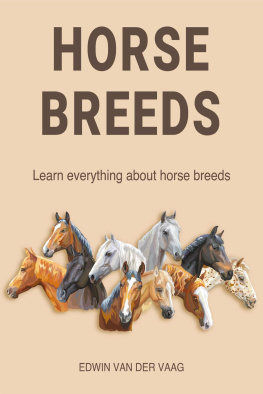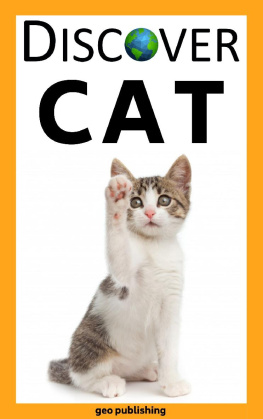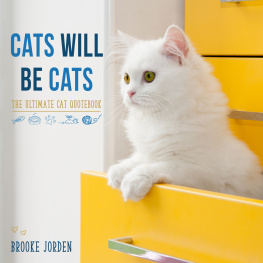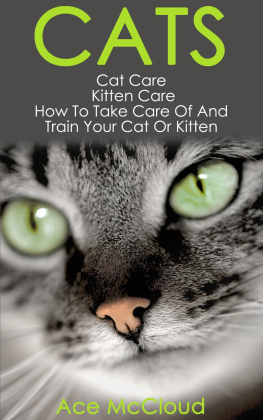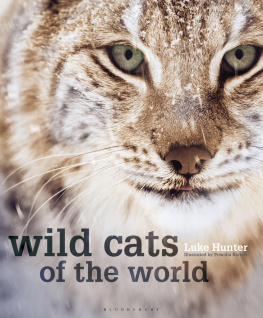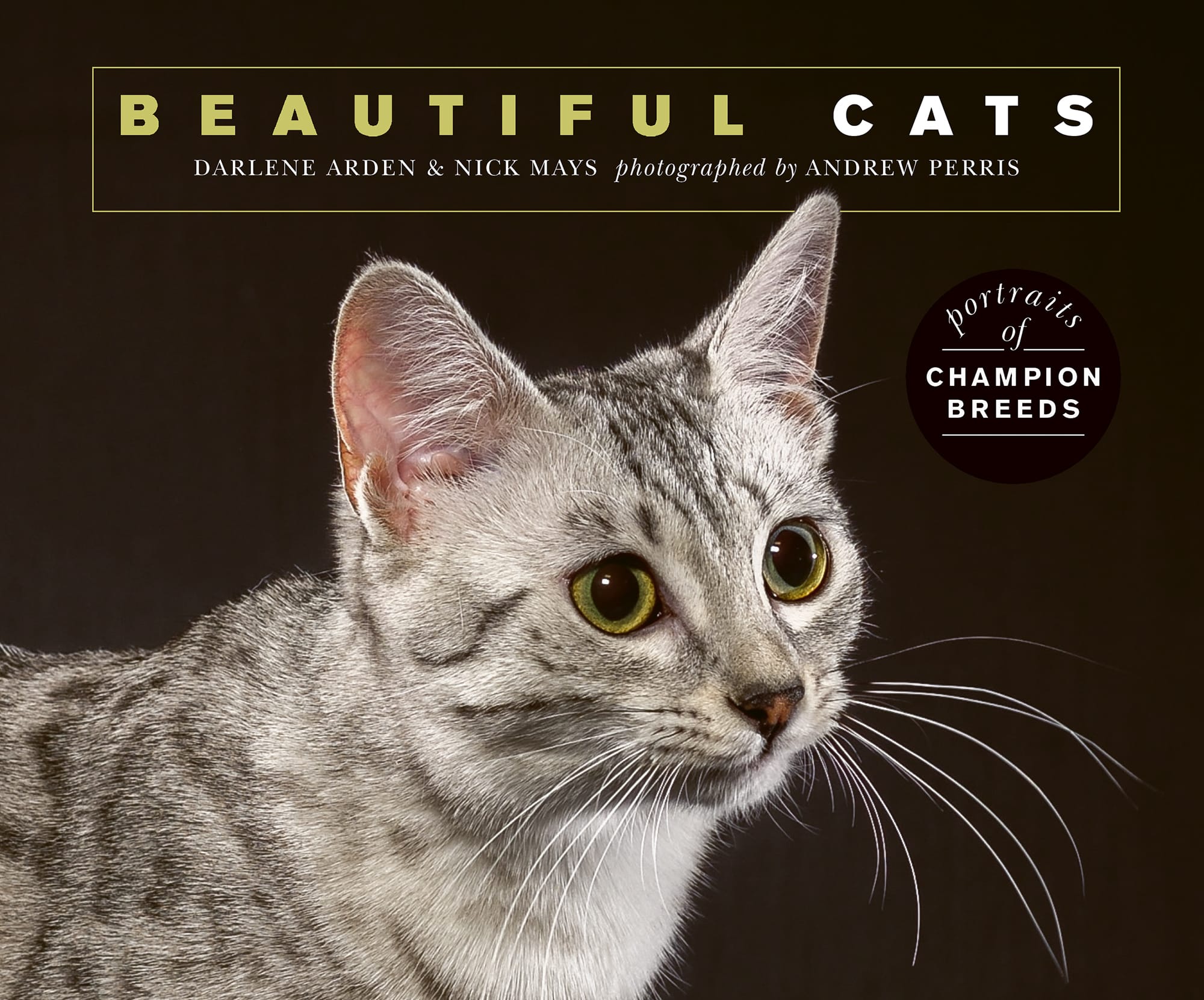BEAUTIFUL CATS
portraits of
CHAMPION BREEDS
DARLENE ARDEN & NICK MAYS
photographed by ANDREW PERRIS

INTRODUCTION

I S THERE ANYTHING IN THE WORLD MORE BEAUTIFUL than a cat? Whether on the move, sleeping, or sitting perfectly still, a cat is incredibly lovely to look at. Even the most awkward cat still manages to look graceful. No matter what body or coat type it has, it manages to look like living art.
Beyond its looks, there is a sweetness that nearly defies description. These are the companions that sit quietly beside you, curl up on your lap, or make you laugh with their antics, whether engaging in play by themselves or with their human companion.
A cats purr has healing properties for itself as well as its owners. Its delightfully soft fur is just right for cuddling and petting and its sandpaper kisses are never to be forgotten.
Cats come in a variety of different sizes, shapes, and colors as well as coat lengths. Their personalities vary, as do their voices. Some cats are highly vocal and like nothing more than to tell you all about their day, while others have a silent meowthe mouth opens but the pitch is so high that the human ear cannot hear it.
Cats will knead their paws on their owners lap. Some people call it making biscuits, and wonder why they do it. It goes back to when they were very young kittens, when they would use this movement in order to get their mothers milk to flow. Its a high compliment when a cat feels comfortable enough to treat their person the way they treated their mother. Its a form of bonding and love and demonstrates complete confidence in the shared relationship. Is it any wonder that these companions have been loved for centuries?
Whether they are anxiously awaiting their persons arrival home from work at the end of the day, following their person from room to room, or helping with the laundry, cats are not the aloof creatures they are often purported to be by observers who dont understand them. On the contrary, they love to be with their family members and, when theyre not nappingwhich adult cats do most of the daythey want to be where the action is, even if this only involves their person reading a book or watching television. A cat is a companion for all seasons and all reasons.
The sight of a contented cat can be very calming in itself; it is hard to be anxious while watching a cat sleep.
THE EVOLUTION OF THE CAT

T HE BIOLOGICAL FAMILY OF CATS is known as felidae. This is divided into two parts: the pantherinae, which includes lions, tigers, jaguars, and leopards and snow leopards; and felinae, which includes ocelots, cougars, cheetahs, lynxes, wildcats, and the domestic cat. In prehistoric times, there were saber-toothed cats from a now-extinct third part of the felidae family, machairodontinae. These early cats were obligate carnivoresmeaning they survived on a diet mainly of meatas are todays domestic cats.
Our understanding of the evolution of cats has greatly increased in recent years through the work of geneticists. An article published in 2006 in the journal Science examined the results of a study of the DNA of 37 living species of felidae, which confirmed that the subfamilies pantherinae and felinae can be divided into eight distinct lineages. The researchers, led by Warren E. Johnson and Stephen J. OBrien, drew a family tree and assigned the various cats to these lineages.
The first extant lineage to split from the prehistoric Pseudaelurus cats was pantherinae; this occured around 10.8 million years ago. The pantherinae lineage is made up of the genera Panthera, Neofelis, and Uncia. Due to the unique structure of their larynx and their flexible hyoid bone, lions, tigers, jaguars, and leopards are the only cats that can roar.
The researchers also proposed that there were at least ten intercontinental migrations of these various cat lineages. Being excellent predators, they survived quite well wherever they went. One of the earliest migrations occurred between 8 and 8.5 million years ago, when cats migrated from Asia to North America by crossing the Bering land bridge. In turn, direct ancestors of later lineages crossed from North America back into Eurasia.
The most recent lineage to develop was Felis, which includes the wildcat (Felis silvestris) and the modern domestic cat (Felis catus or Felis silvestris catus). Domestic cats have much in common with their wild ancestors. Our housecats still have flexible bodies, move quickly, and are great hunters. But thousands of years of living near and among humans has also turned them into wonderful companions for people.
Like its wild ancestor, todays Felis catus, or domestic cat, is often an agile and successful hunter.
A HISTORY OF CATS & HUMANS

I T IS THOUGHT THAT CATS first started to live alongside humans around 10,000 years ago in Southwest Asia, when agriculture was in its early days, or established enough to be attractive to cats. Always intelligent, cats began to make their homes near people to be near the food supply as well as mice and scraps of food. Their prowess in keeping down the rodent population would certainly have been attractive to the people the cats placed themselves near.
The earliest archaelogical evidence of cats living with humans is a gravesite from around 7,500 BCE (the Neolithic Period). The gravesite was discovered in Cyprus. It contained the skeleton of a human and that of a young cat, buried at the same time, and a number of other offerings.
It is well known that cats were worshipped as gods in Egypt. The ancient Egyptians thought that the rays of the sun were kept in cats eyes at night for safekeeping.
Similarly, though not to quite the same extent as in Egypt, cats were held in high regard in ancient Rome, and were the only animals allowed to walk freely around temples.
However, in some later periods of European history, cats have suffered greatly at the hands of humans. In the Middle Ages cats were considered to be in cahoots with the devil and were killed in great numbers. Sadly this had grave consequences during the Black Death, when a thriving cat population could have killed the rats that were carrying the infected fleasif only anyone had realized it. Later, during the Renaissance, many thought that cats were witches familiars, leading to cats being killed in large numbers.


